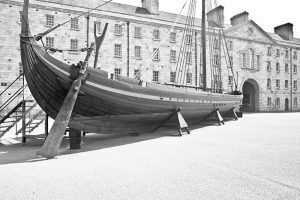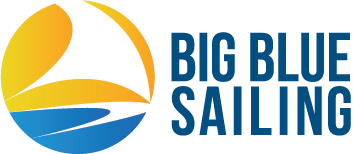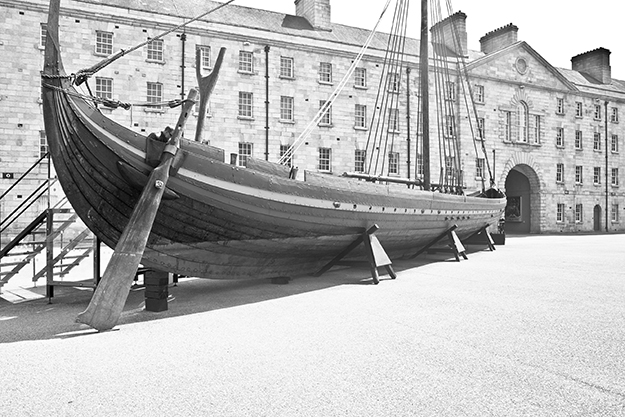Fun Facts – Port and Starboard
Fun Facts
 Since port and starboard never change, they are references that are independent of a mariner’s orientation, and, thus, mariners use these nautical terms instead of left and right to avoid confusion. When looking forward, toward the bow of a ship, port and starboard refer to the left and right sides, respectively.
Since port and starboard never change, they are references that are independent of a mariner’s orientation, and, thus, mariners use these nautical terms instead of left and right to avoid confusion. When looking forward, toward the bow of a ship, port and starboard refer to the left and right sides, respectively.
In the early days of boating, before ships had rudders on their centerlines, boats were controlled using a steering oar. Most sailors were right handed, so the steering oar was placed over or through the right side of the stern. Sailors began calling the right side the steering side, which soon became “starboard” by combining two Old English words: stéor (meaning “steer”) and bord (meaning “the side of a boat”).
As the size of boats grew, so did the steering oar, making it much easier to tie a boat up to a dock on the side opposite the oar. This side became known as larboard, or “the loading side.” Over time, larboard—too easily confused with starboard—was replaced with port. After all, this was the side that faced the port, allowing supplies to be ported aboard by porters.
Port and starboard are nautical and aeronautical terms for left and right, respectively. Port is the left-hand side of a vessel or aircraft, facing forward. Starboard is the right-hand side, facing forward.
The navigational treaty convention, the International Regulations for Preventing Collisions at Sea sets forth the rights of way for maritime vessels, whether by sail or powered, and whether a vessel is overtaking, approaching head-on, or crossing. To set forth these navigational rules, the terms starboard and port are absolutely essential, and to aid in in situ decision-making, the two sides of each vessel are marked, dusk to dawn, by navigation lights, the vessel’s starboard side by green and its port side by red. Aircraft are lit in the same way.
Thanks to the National Oceanic and Atmospheric Administration for the history of Port and Starboard

